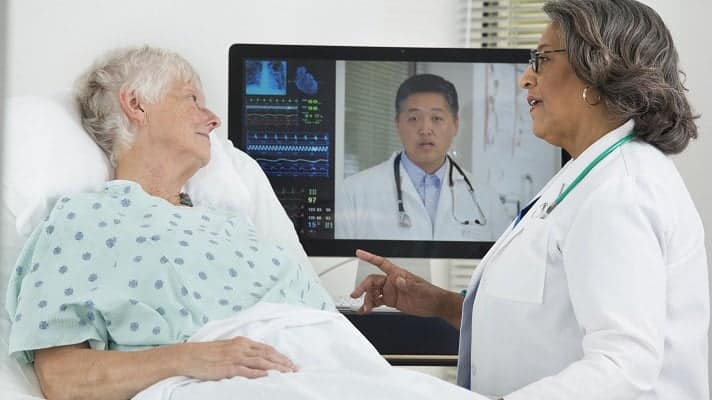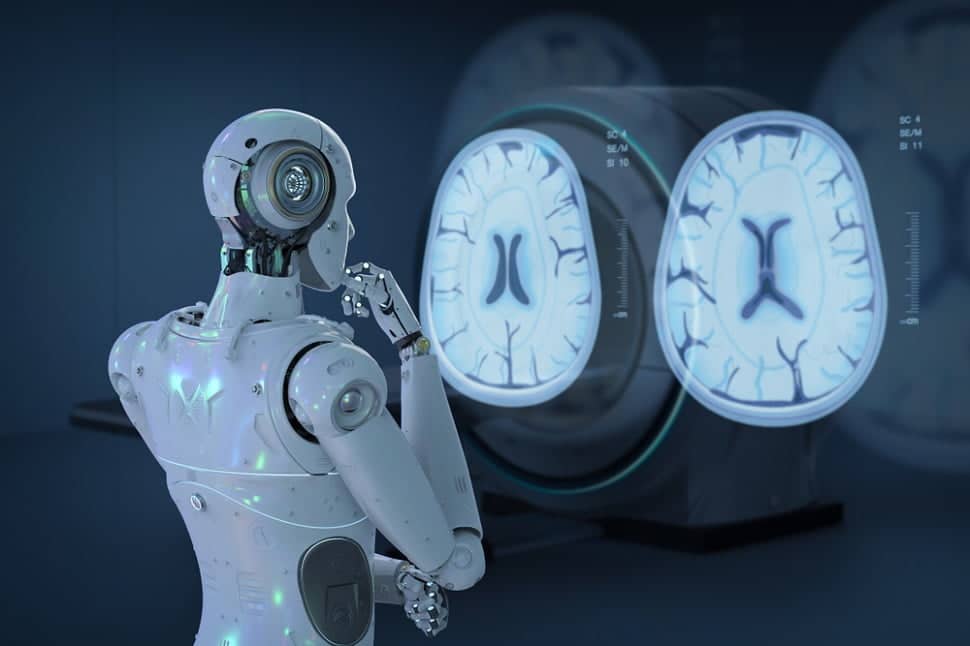It is the typical cold day of January 2030: as always these days the peak of the flu season arrives. At this time of year, ten years ago, clinics and doctors' offices were overflowing with patients waiting to be seen; today, doctors and patients move easily through the widespread system.
What has changed? Connected care has become a reality, after years of health systems always in trouble with little staff forced to work overtime. Healthcare has changed with AI.
Artificial intelligence today develops healthcare models from massive amounts of data that are too complex for people to aggregate. It does so with information coming from sources that in 2020 remained trapped in objects that they still did not "know" how to communicate.
Today, AI-driven healthcare systems are capable of providing preventative and proactive healthcare. At least in 3 ways:
AI-powered predictive assistance

Artificial intelligence and predictive analytics help us understand more about the different life factors that influence our health. They don't just tell us when we might have the flu or what medical conditions we've inherited, but things about where we were born, what we eat, where we work. They help us know what our local air pollution levels are or whether we have access to safe housing and a stable income.
These are some of the factors that WHO defines as i social determinants of health, and which the vulgate called "risk factors". In 2030, health systems can predict when a person is at risk of developing a chronic disease, for example, and suggest preventative measures before they get worse. This development has been so successful that rates of diabetes, heart failure and obstructive heart disease, all heavily influenced by risk factors, are finally on the decline.
Healthcare in 2030: networked hospitals, connected and distributed care

Alongside predictive care comes another turning point linked to the place where one can receive treatment, or can operate if one is a doctor. In 2030 a hospital is no longer a large building covering a wide range of diseases. It focuses on the most complex procedures and the most acute patients, while less urgent cases are monitored and treated through smaller hubs and complexes. Outpatient clinics, small Intra Moenia, Day Hospital Surgery, specialized treatment clinics and even private homes. These locations are connected to a single digital infrastructure. Centralized command centers analyze clinical and location data to monitor supply and demand in real time.
In addition to using AI to identify patients at risk of deterioration, this network removes bottlenecks in the system and always ensures that patients and doctors are diverted from time to time to where they can be treated best or where they are most needed. The glue that binds everything together is no longer a common location.
Doctors and patients: what counts is experience

Why are experiences so important today, in 2030? For patients, research has long shown that the experiential context has a direct effect on improving or worsening. For doctors, the best work experiences have become increasingly urgent: a decade ago they suffered from huge burnout rates, mainly caused by the stress of trying to help too many patients. Sometimes they were even physically attacked by exasperated and violent patients, in emergency rooms for shortages of staff or organization.
In 2030, AI-powered predictive healthcare networks are helping reduce wait times and improve staff workflows.
The more AI is used in clinical practice, the more doctors increase their confidence and skills in areas such as surgery and diagnostics.
By learning from every patient, every diagnosis and every procedure, AI creates experiences that adapt to the professional and the patient. This not only improves health outcomes, but also reduces physician understaffing and burnout. And all this while ensuring financial sustainability of the healthcare system.
Let's go back to reality
Here we are again in 2020. We are still a long way from achieving this vision of 2030. Technology is still cumbersome, IT systems and databases still impede staff workflows and threaten continuity of care. Healthcare still experiences sluggishness in clinical areas where technology should be doing more to help diagnose, treat, monitor, and hopefully prevent and cure disease.
Nonetheless, I see clear signs that all three of these ideas may one day become reality.
Smart systems are already capable of performing advanced tasks and increasing human capabilities. For example, artificial intelligence is able to detect cancerous lesions on an image, optimizing the doctor's work. In some cutting-edge hospitals, the application of AI-driven predictive analytics is already helping to save lives in intensive care units.
Outside hospitals, AI is helping to identify certain at-risk groups so that preventative primary or community healthcare can reduce the need for hospital admissions.
It is a long and complex journey that no single company or organization can do alone. Governments, health systems and private companies should work together to ensure that artificial intelligence systems are fully interoperable and transparent by preventing errors and inequalities.
As healthcare continues to slowly globalize, the need for international standards that protect how AI derives and uses personal data will become an urgent priority.
Because the most powerful use of AI is to enhance human capabilities, not replace them. The heart of the hyperconnected healthcare of the future will not be new technology, it will be people: those seeking treatment, and those who will provide it.


